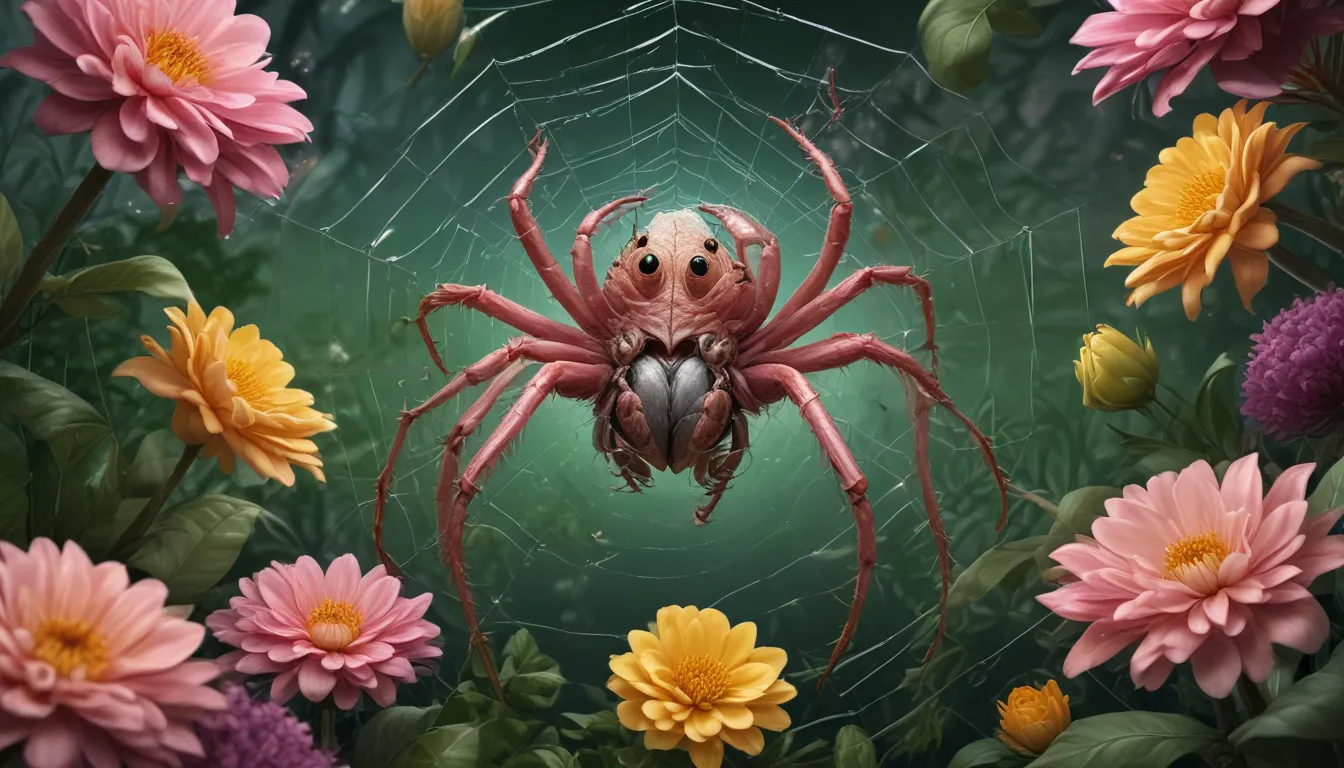The pictures we use in our articles might not show exactly what the words say. We choose these pictures to make you interested in reading more. The pictures work together with the words but don’t take their place. The words still tell you the important facts.
Flower spiders, also known as crab spiders or Thomisidae, are captivating creatures that have carved out a unique niche in the world of flowers. These tiny arachnids possess extraordinary abilities and behaviors that set them apart from other spiders. From their remarkable color-changing skills to their strategic hunting techniques, flower spiders never fail to impress. In this article, we will delve into the enchanting world of flower spiders and uncover nine astounding facts that showcase their unique adaptations and incredible hunting prowess. Join us as we explore the captivating realm of these fascinating creatures!
The Astonishing World of Flower Spiders
Flower spiders, scientifically known as Thomisidae, are masters of disguise with exceptional camouflage abilities that allow them to blend effortlessly with flowers, making them virtually invisible to their unsuspecting prey.
Masters of Camouflage
One of the most fascinating traits of flower spiders is their ability to change their body color to match the flower they are resting on. This remarkable camouflage helps them ambush their prey without being detected, showcasing their incredible adaptability in the world of flowers.
Specialized Legs for Precision Hunting
The flower spider's legs are specially adapted for navigating through flowers with precision. The front pair of legs are longer and stronger, enabling these tiny predators to swiftly grasp and immobilize prey much larger than themselves.
Discovering the World of Flower Spiders
Let's unravel more intriguing facts about these remarkable creatures that make them a vital part of various ecosystems around the world.
Fearless Predators in Disguise
Despite their diminutive size, flower spiders are fearless predators known for tackling prey much larger than themselves, including bees, butterflies, and small flying insects. Their powerful front legs and quick reflexes make them formidable hunters in the world of flowers.
Essential Role as Natural Pest Controllers
Flower spiders play a crucial role in controlling pest populations in flower gardens and agricultural fields. By preying on damaging insects, they help maintain a balanced ecosystem and contribute to the overall health of the environment.
Solitary Hunters with Strategic Tactics
These spiders are solitary hunters that do not rely on building traditional webs to catch their prey. Instead, they patiently wait on flowers, blending seamlessly with the petals to ambush unsuspecting victims. Their strategic tactics and excellent camouflage make them highly effective hunters.
A Glimpse into the Life of Flower Spiders
Let's delve deeper into the fascinating world of flower spiders and uncover more captivating facts about their behavior and life cycle.
Intriguing Reproduction Rituals
During the mating process, male flower spiders must approach females with caution to avoid being mistaken for prey. To ensure success, males carefully navigate the web and perform intricate courtship rituals. If successful, females will accept the male, leading to mating and the subsequent construction of a silken cocoon to protect the developing arachnids.
Protective Mothers Ensuring Survival
After mating, female flower spiders become extremely protective of their eggs, guarding the silken cocoon until the spiderlings hatch. This maternal care ensures the safety and survival of the offspring, highlighting the nurturing instincts of these remarkable creatures.
Global Distribution and Adaptability
Flower spiders can be found in various regions around the world, including Asia, Europe, Africa, Australia, and the Americas. Their adaptability to diverse environments and wide distribution make them a key component of many ecosystems, showcasing their significance in the natural world.
Unveiling the Beauty of Flower Spiders
The enchanting world of flower spiders is filled with astounding facts and captivating behaviors that showcase the unique adaptations of these remarkable creatures. Their ability to blend seamlessly with flowers, their strategic hunting skills, and their importance in maintaining ecological balance make them truly fascinating species that deserve our admiration.
Embracing the Complexity of Nature
As we continue to explore the wonders of the animal kingdom, let us not overlook the beauty and complexity of creatures like the flower spider. With their stunning appearance, unique behaviors, and essential role in the ecosystem, flower spiders serve as a reminder of the intricate harmony that exists in nature.
Frequently Asked Questions About Flower Spiders
Curious to learn more about these captivating creatures? Here are some frequently asked questions about flower spiders:
- What is a flower spider? Flower spiders, also known as crab spiders, are a family of spiders belonging to the Thomisidae family. They are expert ambush predators that camouflage themselves among flowers to catch prey.
- How do flower spiders change colors? Flower spiders can change their color by manipulating pigments in specialized cells called chromatophores to match the flowers they are hiding in.
- What do flower spiders eat? Flower spiders primarily feed on insects like bees, butterflies, and other small pollinators that come near their hunting grounds.
- Do flower spiders build webs? Flower spiders do not build intricate webs like traditional spiders. Instead, they rely on their camouflage and stealth to ambush prey.
- Are flower spiders dangerous to humans? Flower spiders are generally not considered dangerous to humans as they are small in size and do not possess venom potent enough to harm humans.
- How do flower spiders reproduce? Male flower spiders use special body movements and courtship rituals to approach females for mating. Once successful, females guard their eggs until they hatch.
- Are flower spiders beneficial to the ecosystem? Yes, flower spiders play a vital role in ecosystems by controlling insect populations, particularly those that act as pollinators.
- Where can flower spiders be found? Flower spiders can be found in various regions worldwide, particularly in areas abundant in flowering plants.
- How long do flower spiders live? The lifespan of a flower spider can vary depending on the species and environmental factors, with an average lifespan ranging from several months to a year.
Exploring the Fascinating World of Flower Spiders
With their captivating camouflage, fearless hunting skills, and essential role in maintaining ecological balance, flower spiders stand out as extraordinary creatures in the natural world. As we unravel the mysteries of these remarkable arachnids, let us appreciate the beauty and complexity of nature's creations, including the enchanting world of flower spiders.






